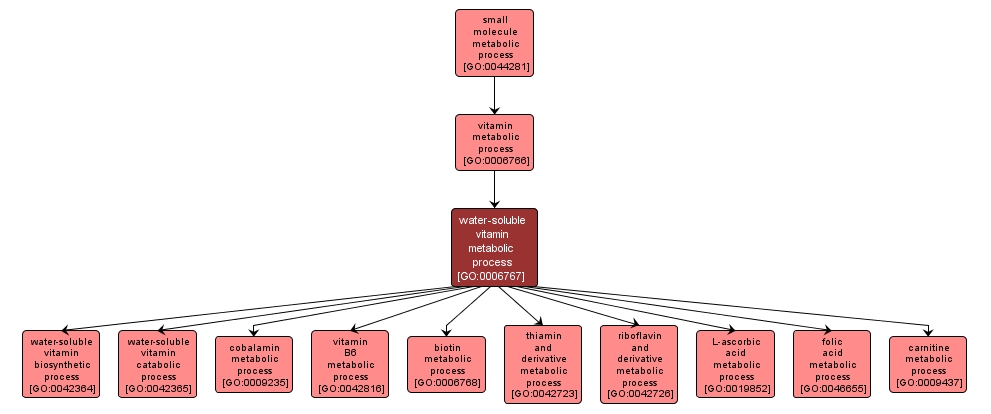GO TERM SUMMARY
|
| Name: |
water-soluble vitamin metabolic process |
| Acc: |
GO:0006767 |
| Aspect: |
Biological Process |
| Desc: |
The chemical reactions and pathways involving any of a diverse group of vitamins that are soluble in water. |
Synonyms:
- water-soluble vitamin metabolism
|
|

|
INTERACTIVE GO GRAPH
|














